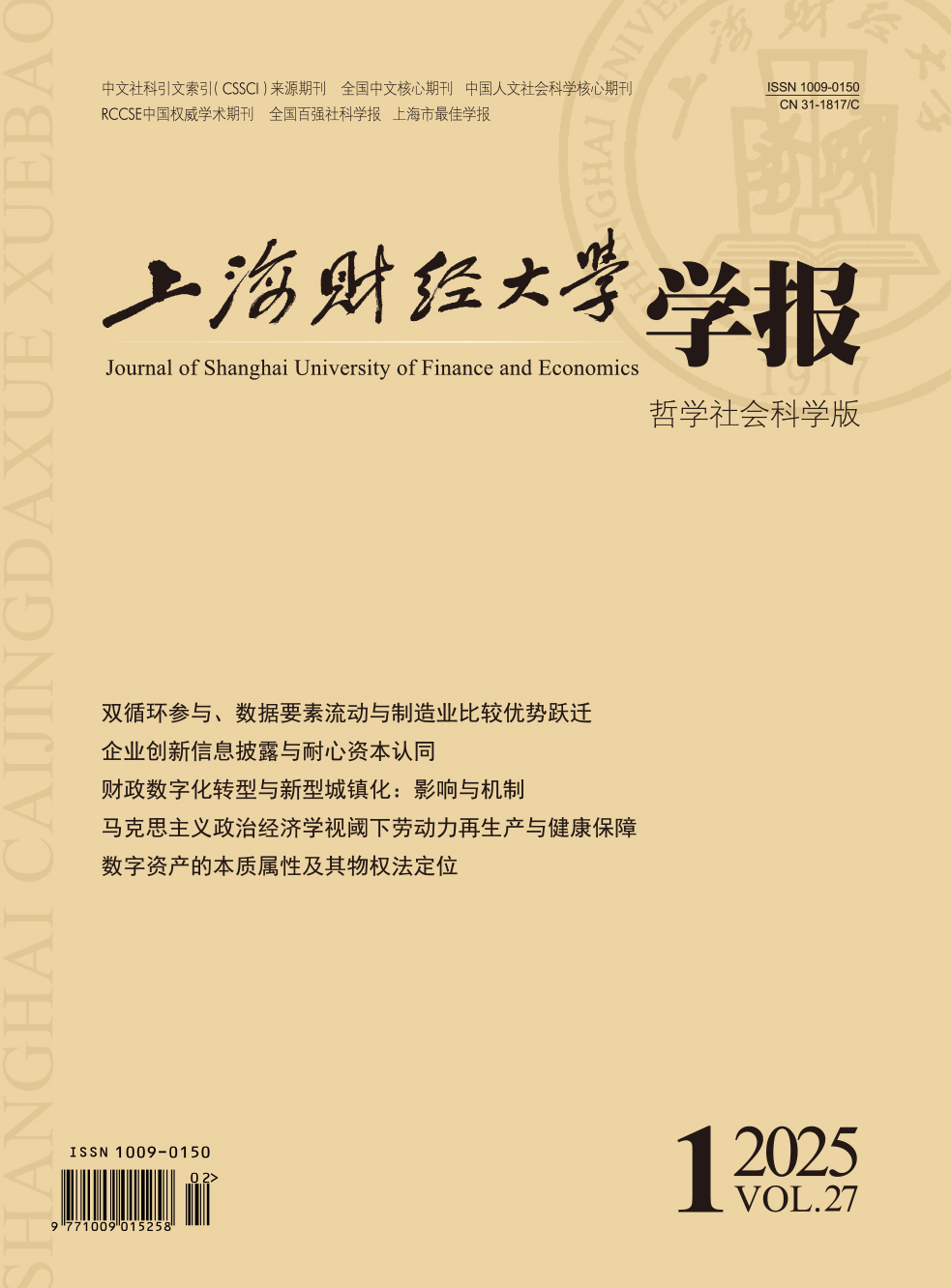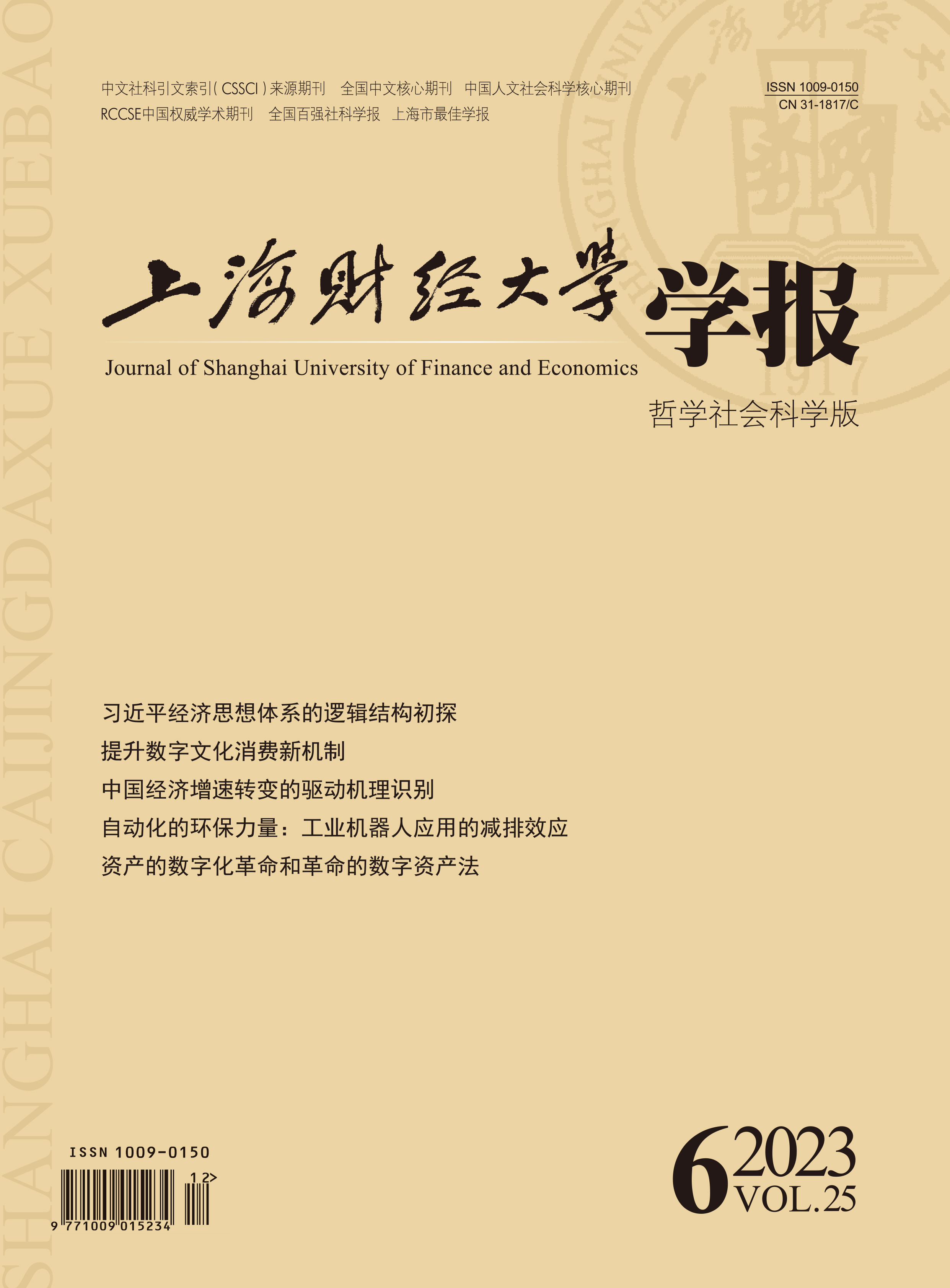企业ESG表现是真心实意为了可持续发展还是助推自利行为的“漂绿”工具?文章以2009—2020年A股上市公司为样本,研究企业ESG表现对金融资产配置的影响。研究表明:当企业ESG表现越好时,金融资产配置程度越高,即企业ESG表现对金融资产配置产生了刺激效应;动机识别检验发现,投机套利是企业“漂绿”ESG以配置金融资产的主要动机;基于“压力—机会—借口”的治理视角研究发现,在业绩表现好、环境规制弱(即“压力”小),内部控制质量高、信息不对称程度低(即“机会”寡),以及管理层过度自信程度低、国有产权(即“借口”少)的情形下,企业ESG表现对金融资产配置的刺激效应会受到抑制。研究结论有助于深入理解企业ESG表现影响金融资产配置的内在逻辑,对完善企业ESG评价体系、抑制企业“漂绿”现象,从而引导金融回归实体经济有所启示。
企业ESG表现与金融资产配置:刺激还是抑制?
摘要
参考文献
8 黄珺, 汪玉荷, 韩菲菲, 等. ESG信息披露: 内涵辨析、评价方法与作用机制[J]. 外国经济与管理,2023,(6). DOI:10.16538/j.cnki.fem.20221018.202
22 刘荣增, 何春. 环境规制对城镇居民收入不平等的门槛效应研究[J]. 中国软科学,2021,(8). DOI:10.3969/j.issn.1002-9753.2021.08.010
23 刘姝雯, 刘建秋, 阳旸, 等. 企业社会责任与企业金融化: 金融工具还是管理工具?[J]. 会计研究,2019,(9). DOI:10.3969/j.issn.1003-2886.2019.09.010
25 钱爱民, 吴春天, 朱大鹏. 民营企业混合所有制能促进实体经济“脱虚返实”吗?[J]. 南开管理评论, 2023, (1).
28 孙慧, 祝树森, 张贤峰. ESG表现、公司透明度与企业声誉[J/OL]. 软科学. http://kns.cnki.net/kcms/detail/51.1268.G3.20230203.1109.010.html, 2023-02-03.
29 王大地, 黄洁. ESG理论与实践[M]. 北京: 经济管理出版社, 2021: 2-3.
34 席龙胜, 王岩. 企业ESG信息披露与股价崩盘风险[J]. 经济问题,2022,(8). DOI:10.3969/j.issn.1004-972X.2022.8.jjwt202208001
44 Albrecht W S, Wernz G W, Williams T L. Fraud: Bringing light to the dark side of business[M]. Burr Ridge: Irwin Professional Pub, 1995.
45 Broadstock D C, Chan K, Cheng L T W, et al. The role of ESG performance during times of financial crisis: Evidence from COVID-19 in China[J]. Finance Research Letters,2021,38:1-11. DOI:10.1016/j.frl.2020.101716
46 Brooks C, Oikonomou I. The effects of environmental, social and governance disclosures and performance on firm value: A review of the literature in accounting and finance[J]. The British Accounting Review,2018,50(1):1–15. DOI:10.1016/j.bar.2017.11.005
47 Burke J J. Do boards take environmental, social, and governance issues seriously? Evidence from media coverage and CEO dismissals[J]. Journal of Business Ethics,2022,176(4):647–671. DOI:10.1007/s10551-020-04715-x
48 Crotty J. Owner-management conflict and financial theories of investment instability: A critical assessment of Keynes, Tobin, and Minsky[J]. Journal of Post Keynesian Economics,1990,12(4):519–542. DOI:10.1080/01603477.1990.11489816
49 Dechow P M, Sloan R G, Sweeney A P. Detecting earnings management[J]. The Accounting Review,1995,70(2):193–225.
50 Drempetic S, Klein C, Zwergel B. The influence of firm size on the ESG score: Corporate sustainability ratings under review[J]. Journal of Business Ethics,2020,167(2):333–360. DOI:10.1007/s10551-019-04164-1
51 Friedman M. The social responsibility of business is to increase its profits[N]. New York Times Magazine, 1970-09-13.
52 Garvey G T, Kazdin J, LaFond R, et al. A pitfall in ethical investing:ESG disclosures reflect vnlnerabilities,not virtues[J]. Journal of Investment Management,2017,15(2):51–64.
53 Ge G, Xiao X, Li Z, et al. Does ESG performance promote high-quality development of enterprises in China? The mediating role of innovation input[J]. Sustainability,2022,14(7):1-24. DOI:10.3390/su14073843
54 Gillan S L, Koch A, Starks L T. Firms and social responsibility: A review of ESG and CSR research in corporate finance[J]. Journal of Corporate Finance,2021,66:1-16. DOI:10.1016/j.jcorpfin.2021.101889
55 Godfrey P C. The relationship between corporate philanthropy and shareholder wealth: A risk management perspective[J]. Academy of Management Review,2005,30(4):777–798. DOI:10.5465/amr.2005.18378878
56 Godfrey P C, Merrill C B, Hansen J M. The relationship between corporate social responsibility and shareholder value: An empirical test of the risk management hypothesis[J]. Strategic Management Journal,2009,30(4):425–445. DOI:10.1002/smj.750
57 Hambrick D C, Mason P A. Upper echelons: The organization as a reflection of its top managers[J]. Academy of Management Review,1984,9(2):193–206. DOI:10.2307/258434
58 Hayward M L A, Hambrick D C. Explaining the premiums paid for large acquisitions: Evidence of CEO hubris[J]. Administrative Science Quarterly,1997,42(1):103–127. DOI:10.2307/2393810
59 Hirshleifer D, Low A, Teoh S H. Are overconfident CEOs better innovators?[J]. The Journal of Finance,2012,67(4):1457–1498. DOI:10.1111/j.1540-6261.2012.01753.x
60 Nunn N, Qian N. US food aid and civil conflict[J]. American Economic Review,2014,104(6):1630–1666. DOI:10.1257/aer.104.6.1630
61 Stockhammer E. Shareholder value orientation and the investment-profit Puzzle[J]. Journal of Post Keynesian Economics,2006,28(2):193–215. DOI:10.2753/PKE0160-3477280203
62 Thomas J, Yao W, Zhang F, et al. Meet, beat, and pollute[J]. Review of Accounting Studies,2022,27(3):1038–1078. DOI:10.1007/s11142-022-09694-0
63 Wang Z H, Sarkis J. Corporate social responsibility governance, outcomes, and financial performance[J]. Journal of Cleaner Production,2017,162:1607–1616. DOI:10.1016/j.jclepro.2017.06.142
64 Zhong M, Gao L. Does corporate social responsibility disclosure improve firm investment efficiency? Evidence from China[J]. Review of Accounting and Finance,2017,16(3):348–365. DOI:10.1108/RAF-06-2016-0095
引用本文
上官泽明, 张媛媛. 企业ESG表现与金融资产配置:刺激还是抑制?[J]. 上海财经大学学报, 2023, 25(6): 44-58.
导出参考文献,格式为:





 5002
5002  4010
4010

